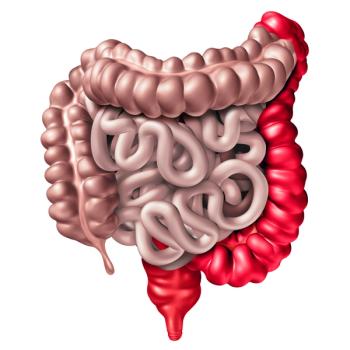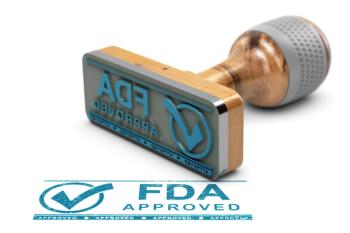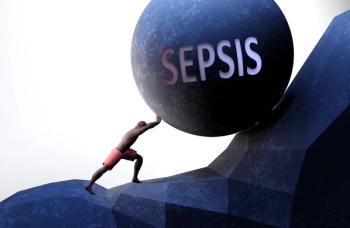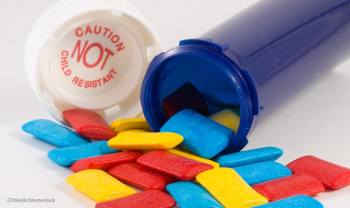
Long-acting injection formulations of paliperidone improve health outcomes in adults with schizophrenia but that might not be enough to offset their substantial costs, new study finds.

Long-acting injection formulations of paliperidone improve health outcomes in adults with schizophrenia but that might not be enough to offset their substantial costs, new study finds.

The number of health plans that put in place restrictive policies that go beyond FDA-approved label is increasing, a new Tufts study finds.

Biosimilars that are interchangeable with Humira could provide more competition on price, a new analysis suggests.

Researchers say capping insulin costs at $35 a month has the potential to lower events and costs related to diabetes, such as amputations, vision loss, and heart attacks.

Researchers have been working on sorting out the causal direction of multiple sclerosis (MS) and depression. These findings suggest that depression can be a consequences of MS-related disability not the other way around.

Mutations in one locus were associated with a decrease in the median time until needing a walking aid of between 3.3 and 3.7 years.

70% of inflammatory bowel disease patients managed by in-system specialty pharmacies were adherent to their therapies, according to research findings.

Results reported in the New England Journal of Medicine show that the Eli Lilly drug was superior to placebo in keeping ulcerative colitis in remission.

The researchers conclude that it is “reasonable option” for older patients with stable multiple sclerosis (MS) to stop taking disease-modifying therapy because the risk of relapse from doing so is small.

The favorable results from the 84-patient study may, in part, depend on some of the definitions used.

Lifileucel is a polyclonal tumor infiltrating lymphocyte (TIL) therapy designed for patients with advanced melanoma who have experienced progression after previous treatment with anti-PD-1/L1 therapy and targeted therapy.

The frequency of drug manufacturer coupon utilization is associated with more market competition—but not patients’ out-of-pocket costs.

The FDA recently approved Brixadi to treat moderate to severe opioid use disorder in patients who have already started treatment with a transmucosal form of buprenorphine, and have approved Opvee as an emergency treatment to reverse known or suspected opioid overdose in people ages 12 years and older.

The list price for a 30-day supply of the drug, Rinvoq, is around $6,125. Eligible patients may be able to benefit from copay savings cards and other financial support programs from AbbVie.

But higher costs for cancer drugs did not influence some common measures of adherence, such as medication possession ratio and proportion of days. The researchers believe that cancer patients may be more likely to adhere to medication regimen, regardless of price, because the drugs are critical for survival.

Researchers found a significant decrease in mortality or discharge to hospice with the hydrocortisone-fludrocortisone combination versus hydrocortisone alone in septic shock cases.

The FDA approved Rexulti (brexpiprazole) for Alzheimer’s-related agitation based on the findings of two clinical trials.

Using a national database, data on medication purchases was collected, along with factors that may have influenced expenditures, such as new therapy availability, patent expirations, policy changes, and legislation.

Cancer-related cost-effective analyses (CEA) referenced higher thresholds than non-cancer-related CEAs, which may suggest interventions for diseases associated with greater mortality and morbidity warrant higher thresholds.

Cystic fibrosis drug Trikafta gets expanded indication for children ages 2-5.

CDI is a leading cause of infections acquired in healthcare settings, including hospitals and nursing homes. After recovering, individuals may get the infection again, and the risk of recurrence increases with each infection.

The study found that Medicare patients used low-benefit options more frequently than high-benefit options.

One of the warnings regard the risk of opioid-induced hyperalgesia, a condition associated with taking opioids that causes an increase in pain or an increased sensitivity to pain.

Omisirge is a stem cell therapy that helps the body recover more quickly from cancer treatments that kill normal blood cells along with blood cancer cells, thus lowering the risk of infection.

HyQvia is the first FDA-approved treatment for primary immunodeficiency (PI) available as a once-a-month subcutaneous injection. Other treatments for PI, while similarly effective, present a greater burden to patients, often requiring more frequent injections or more invasive routes of administration

Tirzepatide was associated with a greater reduction in hemoglobin A1c and body weight versus semaglutide. Though, with a current list price of $1,023 for a one-month supply of tirzepatide (Mounjaro; Lilly), is it worth it?

The FDA granted the EUA based on the PANAMO phase 3 clinical trial results demonstrating that vilobelimab improved survival compared to placebo, with a 23.9% relative reduction in all-cause mortality at 28 days.

A study funded by Genentech showed that the assistance programs substantially reduce prescription abandonment regardless of race or income level.

Out-of-pockets costs were higher among those using branded or more recently launched drugs.